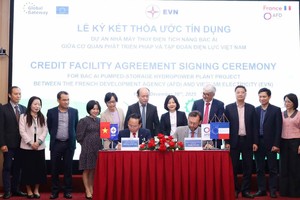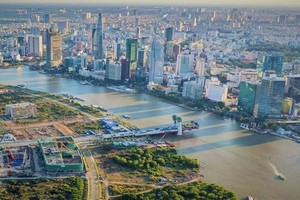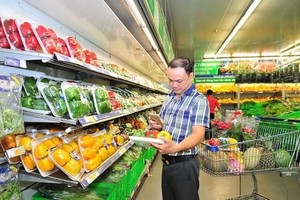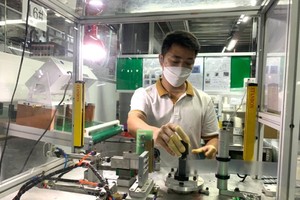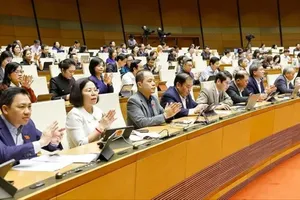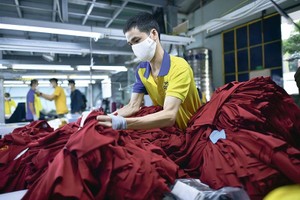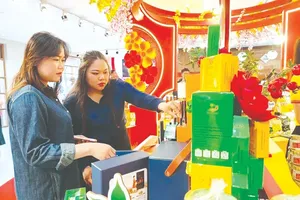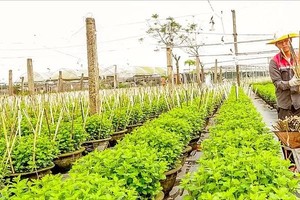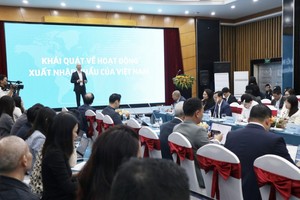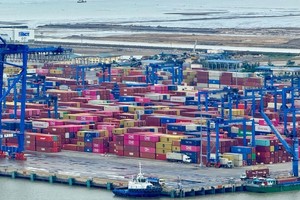The country’s economic climate, growth scenarios, and challenges in 2010 were discussed at a seminar in Hanoi on January 14.
Speaking at the seminar, Dr. Le Dinh An, director of the National Centre for Socio-Economic Information and Forecast (NCSIF), said that the global economy has entered into a recovery period this year, but it still faces many difficulties. Therefore, “if we are to boost growth, we must keep a close watch on the world economy and respond promptly to protect Vietnam’s economy", he said.
The participants discussed various issues including the country’s business environment, monetary-financial policies, the legal system, the exchange rate policy, and trade and investment.
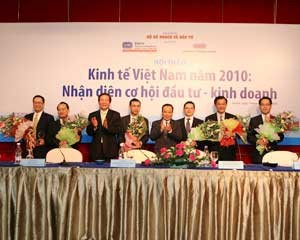
The key task for 2010 is to stabilize Vietnam’s macro-economy to ensure a socio-economic growth rate higher than 2009 and improve social welfare, said a representative of the Ministry of Planning and Investment.
Economic experts discussed the possible raising of the minimum wage, tax exemptions, and other stimulus measures as well as the competitiveness of securities, real estate, businesses, and other sectors in the post-crisis period.
Two scenarios
Based on the current state of the Vietnamese and global economy, Dr. An forecast the country’s economy in 2010 would unfold according to one of two scenarios.
In the first scenario, the economy would grow at a moderate rate with agriculture, forestry and fisheries likely growing by 3-3.2 percent; industries and construction by 6.4-6.8 percent; and services, by 7.1-7.9 percent. This would result in a GDP growth of 6-6.5 percent.
In this situation, total investment would account for 40 percent of GDP, CPI would be kept to a single digit, and the budget deficit would be 6.2 percent of GDP.
To stabilize the macro-economy, this scenario requires careful consideration in the mobilization and use of resources in developing the economy, said Mr. An.
In the second scenario, the economy would grow at a higher rate, around 7 percent, with agriculture, forestry and fisheries likely growing by 3.2-3.4 percent; industries and construction by 6.8-7.4 percent; and services by 7.9-8.5 percent.
In this case, the budget deficit and total investment would make up 6.5 percent and 42 percent of GDP respectively.
In both scenarios, Mr. An warned that high inflation could occur at any time during the year, so effective measures to control prices and markets must be taken.
He also forecast that this year might see an export turnover range from US$66.4-67.8 billion, import spending from $77.5-80 billion, and trade deficit around $12 billion.
Challenges to overcome
Dr. Nguyen Dinh Cung, deputy head of the Central Institute for Economic Management, said the country must remove obstacles to economic development.
He said first, administrative reforms should be sped up and considered one of the most important goals this year.
When the Government’s plan to cut 30 percent of 6,000 administrative formalities is complete, businesses will reap the benefits of enhanced economic efficiency, he said.
Dr. Vu Viet Ngoan, deputy chairman of the National Assembly's Economic Committee, agreed that if the plan is successful, the country could fulfill its GDP growth target of 6.5 percent this year.
He also warned that banks should improve their liquidity and the State Bank of Vietnam should take measures to stabilize exchange rates to ease burdens for importers that need to lend foreign currencies.
Meanwhile, economic expert Nguyen Mai suggested four strategies including strengthening liberalization of trade and investment; improving the operating efficiency of the State apparatus; stepping up training of high-quality human resources; and accelerating the modernization of technical infrastructure that serve social and economic development.
Others experts advised businesses to seek new outlets for their exports; apply advanced technologies; improve product quality; renovate management; and diversify their forms of capital mobilization.
Local and foreign economic experts, and representatives from the Ministry of Planning and Investment; the Ministry of Labor, War Invalids and Social Affairs; the State Bank of Vietnam, and more than 150 leading businesses participated in the event, which was co-organized by the NCSIF and the Investment newspaper.
